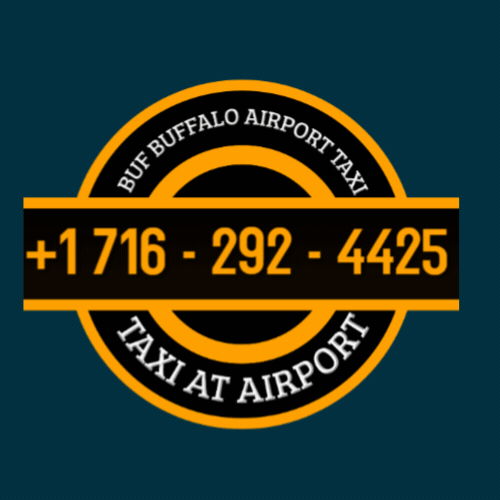Info@BUFAirporttaxi.com
+ (716) 292-4425
Buffalo Airport
Taxi Fare Chart
| Destination | Fare |
|---|---|
| Airport to Chautauqua Institution | $250 |
| Airport to Fredonia | $150 |
| Airport to Dunkirk | $150 |
| Airport to Batavia | $120 |
| Airport to Rochester | $220 |
| Airport to East Aurora | $75 |
| Airport to Lockport | $65 |
| Airport to South Lockport | $75 |
| Airport to Orchard Park | $55 |
| Airport to Hamburg | $55-$60 |
| To Grand Island | $65 |
| To Buffalo Downtown | $40 |
| Lewiston | $105-$110 |
| To Billy Bishop Toronto City Airport | $330 |
| To (YTZ), Toronto Airport - Pearson Airport | $330 |
| St. Catharine's City in Ontario, Canada | $150 |
| St Catharine Ontario Canada | $150 |
| To Niagara Falls Canada Falls views inner Hotels | $105 |
| From BUF to Niagara Falls NY USA Side | $85 |
| To USA Side of Peace Bridge | $65 |
| To Rainbow Bridge Border USA | $85 |
| To North UB-University of Buffalo- North Campus | $43 |
| To Rochester, New York, United States | $203 |
| To Downtown, NYC New York, New York, United States | $1,000 |
| To Philipsburg, Pennsylvania, United States | $546 |
| To D'Youville College | $38 |
| To Dyouville College | $38 |
| To Getzville, New York, United States | $25 |
| From Greyhound Bus Station to Buffalo State College | $24 |
| To West Seneca | $36 |
| from BUF to UB North Campus | $42 |
| From Depew Station to UB North Campus | $42 |
| From Downtown Buffalo to Orchard Park | $50 |
| From Downtown Buffalo NY to Ralph Wilson Stadium | $44 |
| To Pelham Ontario L0S 1E6 | $145 |
| To Depew Train Station To Niagara Falls NY | $85 |
| Buffalo Airport to East Aurora | $75 |
| From Depew Train Station to Niagara Falls Canada | $95 |
| To IAG Niagara Falls Airport | $85 |
| To IAG Niagara Falls International Airport | $85 |
| To Orchard Park NY | $57 |
| To Hilton Niagara falls Falls views | $95 |
| To Fallsview Casino Resort | $95 |
| To any hotel Fallsviews – Falls View hotel | $95 |
| To Crowne Plaza Falls Ave. Niagara Falls | $95 |
| To Four Points by Sheraton Falls views | $95 |
| To Hilton Falls view | $95 |
| To Radisson Hotel & Suites Falls views | $95 |
| To Oakes Hotel Overlooking the Falls views Canada | $95 |
| To Tower Hotel Falls views | $95 |
| To Marriott on the Falls | $95 |
| To Marriott Falls view Hotel & Spa | $95 |
| To Embassy Suites Falls views | $95 |
| To Best Western Fallsview | $95 |
| To Rodeway Inn Fallsview | $95 |
| To Quality Hotel Fallsview Cascade | $95 |
| To Comfort Inn Fallsview | $95 |
| To Days Inn Fallsview | $95 |
| from Greyhound buss Station to Niagara Falls NY | $69 |
| To Greyhound Bud Station | $38 |
| To Buffalo City Hall | $36 |
| To South Campus, 3425 Main St. | $25 |
| To Downtown, Buffalo, New York, United States | $37 |
| To Lockport, NY, New York, United States | $76 |
| To Kenmore, NY, New York, United States | $39 |
| To Amherst, NY, New York, United States | $29 |
| To Tonawanda, New York, United States | $47 |
| To Woodstock Ontario Canada | $371 |
| To Windsor Ontario Canada | $796 |
| To Welland Ontario Canada | $145 |
| To Nipissing Ontario Canada | $843 |
| To Waterloo Ontario Canada | $361 |
| To Victoria Park Station Toronto | $346 |
| To Toronto North York | $350 |
| To Toronto Ontario Canada | $350 |
| To Tim Hortons Garrison Rd Fort Erie | $75 |
| To Thorold Ontario Canada | $133 |
| To Timiskaming Shores Ontario Canada | $1,242 |
| To Sudbury Ontario Canada | $1,137 |
| To Stratford Ontario Canada, | $429 |
| To Sheraton on The Falls Hotel | $95 |
| To Sheraton on The Falls Hotel | $95 |
| To Sheraton On The Falls | $95 |
| To Sarnia Ontario Canada | $645 |
| To Saint Thomas Ontario Canada | $493 |
| To Richmond Hill Ontario Canada, | $372 |
| To Radisson Niagara Falls Canada | $95 |
| To Rainbow Bridge Border Ca | $95 |
| To Port Colborne Ontario Canada | $135 |
| To Peterborough Ontario Canada | $582 |
| To Perth Ontario Canada | $883 |
| To Past Niagara Falls Border, | $95 |
| To Parry Sound Ontario Canada | $870 |
| To Ottawa Ontario Canada | $1,008 |
| To Oshawa Ontario Canada | $471 |
| To Orillia Ontario Canada | $547 |
| To Oakville Ontario Canada | $289 |
| North Bay Ontario Canada | $950 |
| To Niagara-On-The-Lake Ontario Canada | $155 |
| Niagara On The Lake Canada | $155 |
| To Niagara Falls Hard Rock Café USA | $85 |
| To Niagara Falls Canadian Side | $95 |
| To Niagara Falls Canada | $95 |
| To Niagara Falls Ontario | $95 |
| To Niagara Falls views Hotel | $95 |
| To Niagara Falls Ontario Canada | $95 |
| To Ontario | $271 |
| To Mississauga Ontario Canada | $325 |
| To Midland Ontario Canada, | $578 |
| To Montreal, Quebec, Canada | $1,182 |
| To Markham Ontario Canada | $388 |
| To Marriott Falls view Hotel & Spa | $95 |
| To London Ontario Canada | $465 |
| To Laurentian Hills Ontario Canada | $1,145 |
| To Kitchener Ontario Canada | $351 |
| To Kirkland Lake Ontario Canada | $1,406 |
| To Kingston Ontario Canada | $816 |
| To Kawartha Lakes Ontario Canada | $673 |
| To Hamilton Airport | $250 |
| To Hamilton Ontario Canada | $250 |
| To Guelph Ontario Canada | $324 |
| To Ontario Canada | $762 |
| To Fort Erie Border Crossing | $75 |
| Inner Location in Fort Erie Ontario Canada | $85 |
| To Any Falls views Hotels | $95 |
| To Casino Falls views | $95 |
| To Etobicoke Ontario Canada | $305 |
| To Elliot Lake Ontario Canada | $1,321 |
| To Downtown Toronto | $350 |
| To Chatham-Kent Ontario Canada | $656 |
| To Crowne Plaza Niagara Falls Canada | $95 |
| To Cambridge Ontario N1R 1V9 Canada | $310 |
| To Canada Side of Peace Bridge | $95 |
| To Canada Post (Bath) Amherstview | $792 |
| To Byng Ontario Canada | $179 |
| To Burlington Ontario Canada | $220 |
| To Brockville Ontario Canada | $797 |
| To Bradford West Gwillimbury ON | $432 |
| To Brantford Ontario Canada | $299 |
| To Brampton Ontario Canada | $330 |
| To Belleville Ontario K8P 5H7 Canada | $670 |
| To Bancroft Ontario Canada | $794 |
| To Ancaster Ontario Canada | $266 |
Canada travel tips and info.
Here are some valuable tips and information for traveling in Canada. Valuable tips and information for traveling in Canada are provided below.
When traveling in Canada, there are a few things to remember to ensure a smooth and enjoyable trip:
- Pack accordingly for the climate, as Canada can experience extreme weather conditions.
- It’s essential to have the proper documentation, such as a passport or visa, depending on your country of origin.
- Respect the local culture and customs, and take the time to study the history and traditions of the regions you plan to visit.
By remembering these tips, you can have a memorable and successful trip to Canada.

Basic Requirements and Documents to enter to Canada
Identification requirements for U.S. Citizens
Permanent resident with Valid Green Card
Can I Still go to Canada during Covid?
Traveling by our Taxi Company
Traveling with Minors
Traveling with Pets
What is Prohibited to Bring to Canada?
General Tips and Special Situation
Restrictions on Firearms' and other weapons.
to Book - Click the Book Button of Your preference.
Booking Taxi to Canada during Covid Is As Easy As 1-2-3.
Years Of Experience
Happy Customers
Professional Guide
Top Canada Destinations
taxi fare from buffalo airport to Niagara falls Canada and Local cities in Buffalo, NY
Book the best things to do in Canada.
If you want a stress-free travel experience, BUF Buffalo Airport Taxi covers you. Our advanced reservation system lets you plan your ride ahead of time, so you can sit back and relax knowing your transportation needs are taken care of. Just like a well-planned trip is like a smooth ride, our reliable dispatch system ensures you always have a reliable ride waiting for you.
- Flight tracking
- One clear price
- Tried and true service
- professional drivers
- No Tax
- No Toll Fees
- No Additional Charges
- Free Cancellation
If you want to stop in Washington, D.C. on your route, please visit our official taxi provider, Dc Taxi Service. If you’re planning a trip to Tampa, Florida after visiting Buffalo, New York, contact our Tampa Taxi Service and Tampa Taxi Cab provider for a discount.
